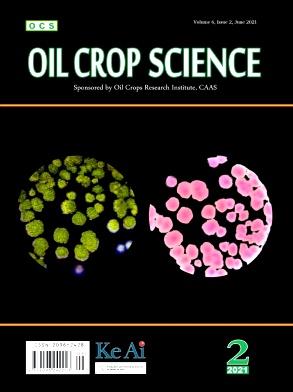Unraveling the biochemical composition and potential applications of sesame seeds and seed cake: a decade overview
Q3 Agricultural and Biological Sciences
引用次数: 0
Abstract
Sesame is the most widely produced oilseed crop with the highest oil content (83%–90%) in Asia, Africa. The seed contains a high amount of protein (19%–35%), dietary fiber (15%–20%), carbohydrate (14%–20%), polyunsaturated fatty acids, and micronutrients. It also contains lignans like sesamol, sesamin, and sesamolin, which protect the oil from oxidative rancidity. The seed also provides seed cake with nutritional value after oil extraction, which is used as a biopolymer in the applications of food packaging, bakery, and confectionary industries, as well as in the preparation of edible and coating films. It can replace commercial expanded polystyrene, which is non-biodegradable in nature. Being the richest source of nutrients, sesame seeds and oilseed cakes have been implemented in different food processing industries. The present review focused on the comprehensive study of biochemical compositions, anti-nutrients, phytochemicals, and antioxidants of sesame seeds and seed cakes and their applications in foods industries.

揭示芝麻和种子饼的生化组成和潜在应用:十年综述
芝麻是亚洲、非洲种植最广泛的油料作物,含油量最高(83%-90%)。种子含有大量的蛋白质(19%-35%)、膳食纤维(15%-20%)、碳水化合物(14%-20%)、多不饱和脂肪酸和微量营养素。它还含有木脂素,如芝麻酚,芝麻素和芝麻素,可以保护油免受氧化酸败。种子在榨油后还为种子饼提供营养价值,作为生物聚合物应用于食品包装、烘焙和糖果行业,以及制备食用和涂层薄膜。它可以取代商业膨胀聚苯乙烯,在自然界是不可生物降解的。作为最丰富的营养来源,芝麻和油籽饼在不同的食品加工行业中得到了应用。本文对芝麻和芝麻饼的生化成分、抗营养成分、植物化学成分、抗氧化剂及其在食品工业中的应用进行了综述。
本文章由计算机程序翻译,如有差异,请以英文原文为准。
求助全文
约1分钟内获得全文
求助全文
来源期刊

Oil Crop Science
Food Science, Plant Science, Agronomy and Crop Science
CiteScore
3.40
自引率
0.00%
发文量
20
审稿时长
74 days
 求助内容:
求助内容: 应助结果提醒方式:
应助结果提醒方式:


